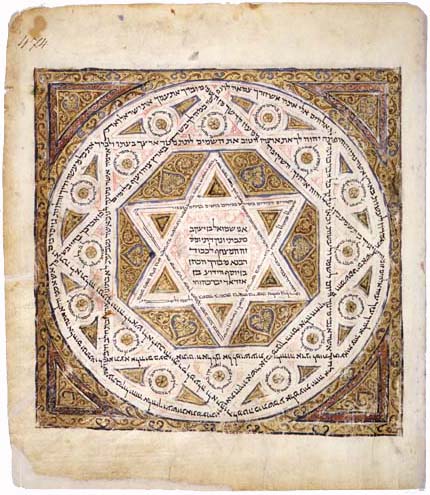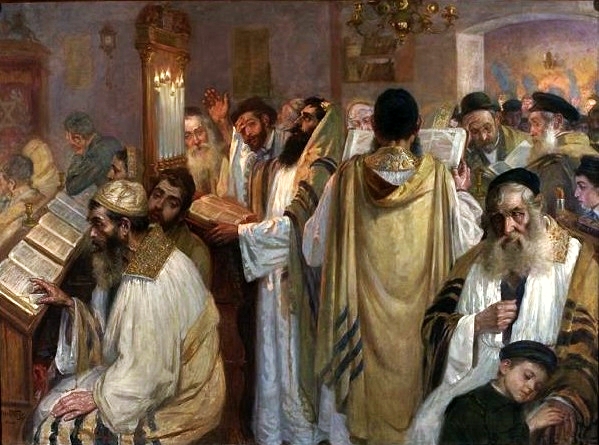|
Masliah Ben Solomon Ha-Cohen
Maṣliaḥ ben Solomon ha-Cohen (, , ''Abū Manṣūr Ṣāliḥ bin Sulaymān al-Hārūnī''; See thnoteconcerning the fragment JRL Gaster heb. ms 1760/3 died 1139), alternatively Matzliach, was a Gaon and the leader of the Palestinian Gaonate in Fustat, the principal Talmudic academy and central legalistic body of the Jewish community in Palestine. He also held the title of ''Ra'is al-Yahud'' (Head of the Jews), from at least 1127 until his possible murder in 1139. After his death, the Gaonate split between Damascus in Syria and Fustat in Egypt. Biography Early life Masliah was a son of the previous Gaon, Solomon ben Elijah ha-Cohen, part of the Priestly family that had ruled the Palestinian Gaonate since the middle of the 11th century. A colophon from 1184 recorded that Masliah had a brother named Sadoq and a sister or sister-in-law, al-Kul Mubaraka. Two sons of Masliah are mentioned in a letter from the Geniza. Nothing more is known of them. A daughter, Alma'ah, appears in ... [...More Info...] [...Related Items...] OR: [Wikipedia] [Google] [Baidu] |
Cairo Genizah
The Cairo Geniza, alternatively spelled Genizah, is a collection of some 400,000 Jewish manuscript fragments and Fatimid administrative documents that were kept in the '' genizah'' or storeroom of the Ben Ezra Synagogue in Fustat or Old Cairo, Egypt. These manuscripts span the entire period of Middle-Eastern, North African, and Andalusian Jewish history between the 6th and 19th centuries CE, and comprise the largest and most diverse collection of medieval manuscripts in the world. The Genizah texts are written in various languages, especially Hebrew, Arabic and Aramaic, mainly on vellum and paper, but also on papyrus and cloth. In addition to containing Jewish religious texts such as Biblical, Talmudic and later Rabbinic works (some in the original hands of the authors), the Genizah gives a detailed picture of the economic and cultural life of the Mediterranean region, especially during the 10th to 13th centuries. Manuscripts from the Cairo Geniza are now dispersed among a num ... [...More Info...] [...Related Items...] OR: [Wikipedia] [Google] [Baidu] |
Al-Maqrizi
Al-Maqrīzī or Maḳrīzī (Arabic: ), whose full name was Taqī al-Dīn Abū al-'Abbās Aḥmad ibn 'Alī ibn 'Abd al-Qādir ibn Muḥammad al-Maqrīzī (Arabic: ) (1364–1442) was a medieval Egyptian Arab historian during the Mamluk era, known for his interest in the Fatimid dynasty and its role in Egyptian history. Life A direct student of Ibn Khaldun, Al-Maqrīzī was born in Cairo and spent most of his life in Egypt. When he presents himself in his books he usually stops at the 10th forefather although he confessed to some of his close friends that he can trace his ancestry to Al-Mu‘izz li-Dīn Allāh – first Fatimid caliph in Egypt and the founder of al-Qahirah – and even to Ali ibn Abi Talib. He was trained in the Hanafite school of law. Later, he switched to the Shafi'ite school and finally to the Zahirite school. Maqrizi studied theology under one of the primary masterminds behind the Zahiri Revolt, and his vocal support and sympathy with that revolt against ... [...More Info...] [...Related Items...] OR: [Wikipedia] [Google] [Baidu] |
Fatimid Caliphate
The Fatimid Caliphate was an Ismaili Shi'a caliphate extant from the tenth to the twelfth centuries AD. Spanning a large area of North Africa, it ranged from the Atlantic Ocean in the west to the Red Sea in the east. The Fatimids, a dynasty of Arab origin, trace their ancestry to Muhammad's daughter Fatima and her husband ‘Ali b. Abi Talib, the first Shi‘a imam. The Fatimids were acknowledged as the rightful imams by different Isma‘ili communities, but also in many other Muslim lands, including Persia and the adjacent regions. Originating during the Abbasid Caliphate, the Fatimids conquered Tunisia and established the city of "Mahdia, al-Mahdiyya" ( ar, المهدية). The Ismaili dynasty ruled territories across the Mediterranean coast of Africa and ultimately made Egypt the center of the caliphate. At its height, the caliphate included – in addition to Egypt – varying areas of the Maghreb, Sudan, Sicily, the Levant, and the Hijaz. Between 902 to 909 th ... [...More Info...] [...Related Items...] OR: [Wikipedia] [Google] [Baidu] |
Ridwan Ibn Walakhshi
Ridwan ibn Walakhshi ( ar, رضوان بن ولخشي) was the vizier of the Fatimid Caliphate in 1137–1139, under Caliph al-Hafiz li-Din Allah. He was a Sunni military commander, who rose to high offices under caliphs al-Amir bi-Ahkam Allah and al-Hafiz. He participated in the coup of Kutayfat, which in 1130–1131 briefly overthrew the Fatimid dynasty, serving as gaoler of the future caliph al-Hafiz. Under al-Hafiz he rose to the powerful position of chamberlain, and emerged as the leader of the Muslim opposition during the vizierate of the Christian Bahram al-Armani in 1135–1137, when he served as governor of Ascalon and the western Nile Delta. In February 1137 he rose in revolt against Bahram, drove him from Cairo, and was in turn appointed to the vizierate with the title of "Most Excellent King" ('' al-malik al-afḍal'') denoting his ambitions and status as a ''de facto'' monarch in his own right. His tenure lasted two years and five months, and was marked by a reo ... [...More Info...] [...Related Items...] OR: [Wikipedia] [Google] [Baidu] |
Ibn Al-Tilmidh
Amīn al-Dawla Abu'l-Ḥasan Hibat Allāh ibn Ṣaʿīd ibn al-Tilmīdh ( ar, هبة الله بن صاعد ابن التلميذ; 1074 – 11 April 1165) was a Christian Arab physician, pharmacist, poet, musician and calligrapher of the medieval Islamic civilization. Ibn al-Tilmidh worked at the ʻAḍudī hospital in Baghdad where he eventually became its chief physician as well as court physician to the caliph Al-Mustadi, and in charge of licensing physicians in Baghdad. He mastered the Arabic, Persian, Greek and Syriac languages. He compiled several medical works, the most influential being ''Al-Aqrābādhīn al-Kabir'', a pharmacopeia which became the standard pharmacological work in the hospitals of the Islamic civilization, superseding an earlier work by Sabur ibn Sahl. His poetry included riddles: Abū al-Maʿālī al-Ḥaẓīrī quotes five of them, and a verse solution by al-Tilmīdh to another riddle, in his ''Kitāb al-iʿjāz fī l-aḥājī wa-l-alghāz'' (Ini ... [...More Info...] [...Related Items...] OR: [Wikipedia] [Google] [Baidu] |
Eruvin (Talmud)
Eruvin (, lit. "Mixtures") is the second tractate in the Order of Moed, dealing with the various types of . In this sense this tractate is a natural extension of Shabbat; at one point these tractates were likely joined but then split due to length. Eruvin, along with Niddah and Yevamot, is considered one of the three most difficult tractates in the Babylonian Talmud. A Hebrew mnemonic for the three is עני (''ani'', meaning "poverty"). Yaakov Emden, ''Mitpachat Sefarim'' 4:174 Structure The tractate consists of ten chapters with a total of 96 mishnayot. Its Babylonian Talmud version is of 105 pages and its Jerusalem Talmud version is of 65 pages. An overview of the content of chapters is as follows: * Chapter 1 () has ten mishnayot. * Chapter 2 () has six mishnayot. * Chapter 3 () has nine mishnayot. * Chapter 4 () has eleven mishnayot. * Chapter 5 () has nine mishnayot. * Chapter 6 () has ten mishnayot. * Chapter 7 () has eleven mishnayot. * Chapter 8 () has eleven mishna ... [...More Info...] [...Related Items...] OR: [Wikipedia] [Google] [Baidu] |
Leningrad Codex
The Leningrad Codex ( la, Codex Leningradensis [Leningrad Book]; he, כתב יד לנינגרד) is the oldest complete manuscript of the Hebrew Bible in Hebrew, using the Masoretic Text and Tiberian vocalization. According to its colophon, it was made in Cairo in 1008 CE (or possibly 1009). Some have proposed that the Leningrad Codex was corrected against the Aleppo Codex, a slightly earlier manuscript that was partially lost in the 20th century. However, Paul E. Kahle argues that the Leningrad manuscript was more likely based on other, lost manuscripts by the ben Asher family. The Aleppo Codex is several decades older, but parts of it have been missing since the 1947 anti-Jewish riots in Aleppo, making the Leningrad Codex the oldest complete codex of the Tiberian mesorah that has survived intact to this day. In modern times, the Leningrad Codex is significant as the Hebrew text reproduced in (1937), (1977), and (2004–present). It also serves as a primary sourc ... [...More Info...] [...Related Items...] OR: [Wikipedia] [Google] [Baidu] |
Saadia Gaon
Saʻadiah ben Yosef Gaon ( ar, سعيد بن يوسف الفيومي ''Saʻīd bin Yūsuf al-Fayyūmi''; he, סַעֲדְיָה בֶּן יוֹסֵף אַלְפַיּוּמִי גָּאוֹן ''Saʿăḏyāh ben Yōsēf al-Fayyūmī Gāʾōn''; alternative English names: Rabbeinu Sa'adiah Gaon ("our Rabbi heSaadia Gaon"), often abbreviated RSG (RaSaG); Saadia b. Joseph; Saadia ben Joseph; Saadia ben Joseph of Faym; or Saadia ben Joseph Al-Fayyumi; 882/892 – 942) was a prominent rabbi, gaon, Jewish philosopher, and exegete who was active in the Abbasid Caliphate. Saadia is the first important rabbinic figure to write extensively in Judeo-Arabic. Known for his works on Hebrew linguistics, Halakha, and Jewish philosophy, he was a practitioner of the philosophical school known as the " Jewish Kalam". In this capacity, his philosophical work '' The Book of Beliefs and Opinions'' represents the first systematic attempt to integrate Jewish theology with components of ancient Gre ... [...More Info...] [...Related Items...] OR: [Wikipedia] [Google] [Baidu] |
Yom Kippur
Yom Kippur (; he, יוֹם כִּפּוּר, , , ) is the holiest day in Judaism and Samaritanism. It occurs annually on the 10th of Tishrei, the first month of the Hebrew calendar. Primarily centered on atonement and repentance, the day's observances consist of full fasting and ascetic behavior accompanied by intensive prayer as well as sin confessions (traditionally inside of a synagogue). Alongside the related holiday of Rosh HaShanah, Yom Kippur is one of the two components of the " High Holy Days" of Judaism. Etymology () means "day" in Hebrew and () is translated to "atonement". The common English translation of Yom Kippur is Day of Atonement; however, this translation lacks precision. The name Yom Kippur is based on the Torah verse, "...but on the 10th day of the seventh month it is the day of ''kippurim'' unto you..." The literal translation of ''kippurim'' is cleansing. Yom Kippur is a Jewish day to atone for misdeeds and become cleansed and purified from ... [...More Info...] [...Related Items...] OR: [Wikipedia] [Google] [Baidu] |
Shavuot
(''Ḥag HaShavuot'' or ''Shavuos'') , nickname = English: "Feast of Weeks" , observedby = Jews and Samaritans , type = Jewish and Samaritan , begins = 6th day of Sivan (or the Sunday following the 6th day of Sivan in Karaite Judaism) , ends = 7th (in Israel: 6th) day of Sivan , celebrations = Festive meals. All-night Torah study. Recital of Akdamut liturgical poem in Ashkenazic synagogues. Reading of the Book of Ruth. Eating of dairy products. Decoration of homes and synagogues with greenery (Orach Chayim494. , significance = One of the Three Pilgrimage Festivals. Celebrates the revelation of the Five Books of the Torah by God to Moses and to the Israelites at Mount Sinai, 49 days (seven weeks) after the Exodus from ancient Egypt. Commemorates the wheat harvesting in the Land of Israel. Culmination of the 49 days of the Counting of the Omer. , relatedto = Passover, which precedes Shavuot , date = , date = , date = , dat ... [...More Info...] [...Related Items...] OR: [Wikipedia] [Google] [Baidu] |




